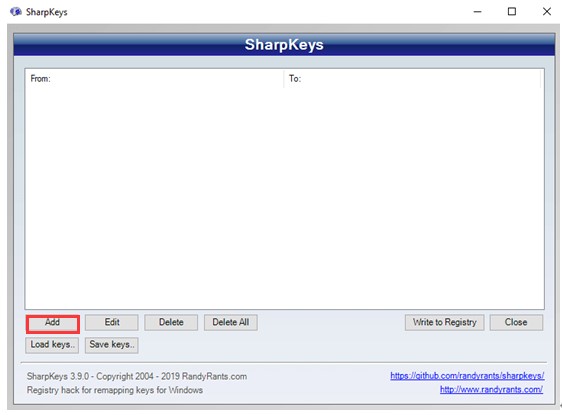

Similar to 'Open', except that the file is added as a new track to your existing project. If there are any unsaved changes to your project, Audacity will ask if you want to save them.įor importing audio files or label files into your project Action
Downward remap keyboard windows#
Everything is printed to one page.Ĭloses all project windows and exits Audacity. Prints all the waveforms in the current project window (and the contents of Label Tracks or other tracks), with the Timeline above. Opens the standard Page Setup dialog box prior to printing Using this command will delete your Undo/Redo History and your Audacity clipboard contents.įor importing audio files or label files into your project
Downward remap keyboard full#
Lists the full path to the twelve most recently saved or opened projects or most recently imported audio filesĬloses the current project window, prompting you to save your work if you have not saved.Ĭompacts your project, saving disk space.

Presents a standard dialog box where you can select either audio files, a list of files (.LOF) or an Audacity Project file to open. The File Menu provides commands for creating, opening and saving Audacity projects and importing and exporting audio files ActionĬreates a new empty project window, to start working on new or imported tracks. These same commands are also listed on the page Scripting Reference, but in a slightly different format that shows information relevant to people using the commands via Scripting. Some less commonly used commands are not in the default menus but they can be accessed by menu by enabling Show extra menus in Interface Preferences. Shortcuts that have not been assigned, that you can assign using keyboard preferences, are shown like so (unassigned).Shortcuts that are only in the Full set are shown like so: Ctrl + # Extra.Standard shortcuts are shown like so: Ctrl + A.You can use Keyboard Preferences to change or remove existing shortcuts or to assign a shortcut to commands that lack a default shortcut. This Full set is the set that was available in Audacity 2.1.3 and earlier. There is also an extended Full set of keyboard shortcuts that can be selected from the Defaults button on the Keyboard Preferences dialog. The default Standard set of shortcuts is a reduced set, compared to earlier versions of Audacity, to simplify the set of shortcuts somewhat and to provide greater flexibilty for users who wish to create their own shortcuts. This page lists all commands in the Audacity menus and all pre-defined keyboard shortcuts.


 0 kommentar(er)
0 kommentar(er)
